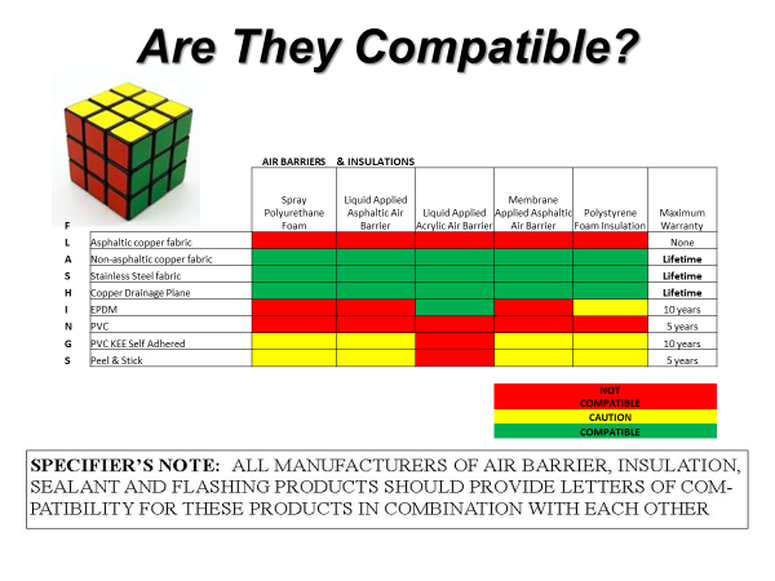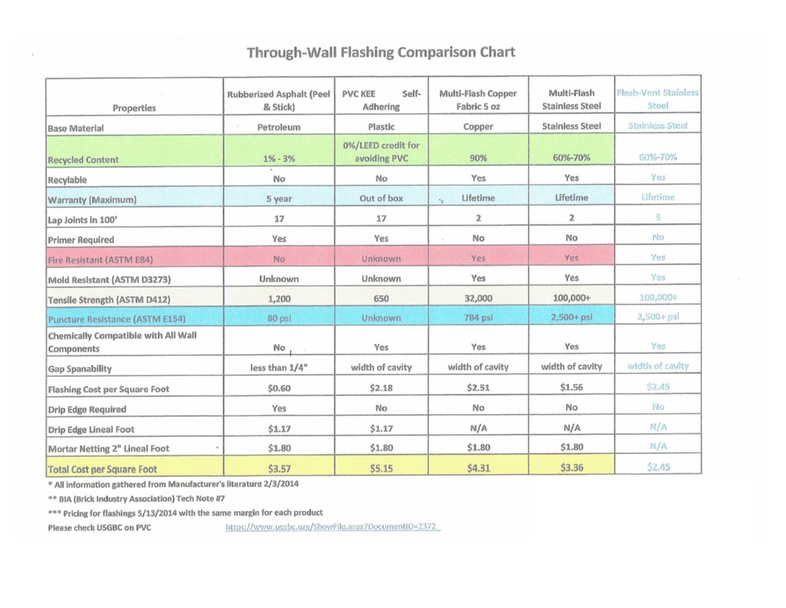|
Contributed by Roy F. Schauffele I opened up my business in Texas on July 4, 1987 and have been in continuous operation since then. When I came to Texas about 65 to 70% of the leak issues I dealt with were roof related, now the vast majority of building envelope leaks that I handle are related to the walls and windows. There are a variety of reasons for these problems:
We all need to realize that today’s walls are being designed for a 40+ year life span and we must adjust our thinking accordingly. Product warranties could be a good indicator of how long the product is anticipated to last. We must also realize that the total installed cost of a flashing system should be taken into serious consideration, and not just the cost of materials. The Brick Institute Association (BIA) has excellent Tech Notes 7 & 7A (Click for link) on this topic at www.gobrick.com/Technical-Notes. This is one of the reference resources I use. Please remember that for through wall flashing to work properly, the flashing material/assembly must extend beyond the face of the mortar. Today’s cavity walls are a chemical soup of ingredients:
Many a time in our industry, the myth becomes reality. Here are a couple of the most egregious myths and the manufacturer’s position:
As a wrap up to this article, through wall and window flashings cost about 0.15% of a project’s cost and comprise way too many of today’s leak complaints. All decisions should be based on physical properties (like puncture resistance, number of lap joints, chart below), methods of proper installation, chemical compatibility, with a good look at the product warranties which could be indicative of anticipated wall-life expectancy.
13 Comments
Bob Simpson
10/11/2017 10:30:15 am
Good stuff Roy!
Reply
10/11/2017 10:38:49 am
Thank you for the comment, Bob. I did the best with the resolution provided, but understand your concern. Can you provide an email address and I'll send it along to Roy?
Reply
Roy Schauffele
10/11/2017 06:02:19 pm
Eric, I sent it to Bob this afternoon, take care.
Roy Schauffele
10/11/2017 06:01:39 pm
Bob, you should have received the chart via E-mail.
Reply
10/11/2017 07:59:49 pm
Great article, I really appreciate the detail, depth of content, and the comparison charts.
Reply
10/19/2017 01:52:07 pm
Nice article Roy. Could you please send me a coopy or link to the Through-Wall Flashing Comparison Chart?
Reply
Brian Trimble
10/26/2017 04:19:43 pm
This is great information on the subject. Good materials are so important in the long run, but are often VE'ed out.
Reply
12/30/2021 04:43:03 pm
Some people believe self adhered doesn't need primer?
Reply
12/30/2021 04:49:59 pm
This is great information? Thanks for the article
Reply
12/30/2021 05:41:02 pm
Great article, I really appreciate the detail, depth of content, and the comparison charts?
Reply
Leave a Reply. |
AboutLet's Fix Construction is an avenue to offer creative solutions, separate myths from facts and erase misconceptions about the architecture, engineering and construction (AEC) industry. Check out Cherise's latest podcast
Get blog post notifications hereArchives
March 2022
Categories
All
|




 RSS Feed
RSS Feed
